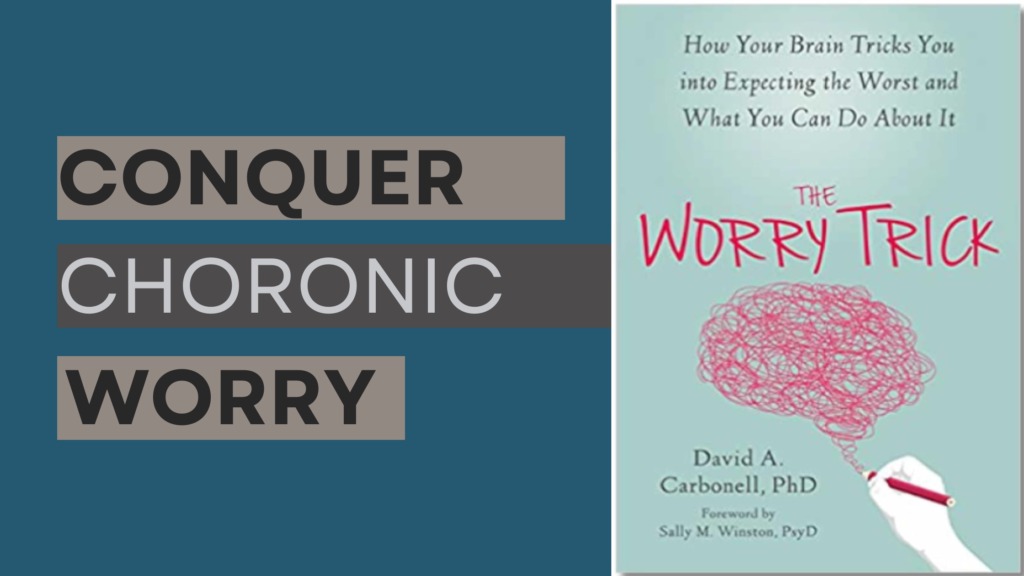Are you feeling like worry is your constant companion, always whispering “what ifs” and worst-case scenarios in your ear? You’re in good company. A lot of us find ourselves battling with anxieties about the future that can really dampen our day-to-day joy.
Enter Dr. David Carbonell’s book, “The Worry Trick: How Your Brain Tricks You into Expecting the Worst and What You Can Do About It.” Dr. Carbonell isn’t just any clinical psychologist; he’s a bit of a wizard when it comes to understanding anxiety. His book doesn’t just rehash the same old advice. Instead, it offers a refreshing take on how to handle the worry wart inside us all.
Why the Usual “Don’t Worry, Be Happy” Might Not Cut It
We’ve all been there—trying to think positive, maybe doing a bit of yoga, or pushing those gnarly thoughts to the back of our mind. Dr. Carbonell points out that, paradoxically, these efforts might just make us worry more. It’s like our brains see these attempts as proof that worry is a big, scary monster we need to run from, making us zero in on it even more.
Decoding the Worry Trick
At the heart of Dr. Carbonell’s book is this idea of the “worry trick.” It’s like our brain is a bit overzealous, ringing alarm bells over perfectly safe situations, mistaking them for full-blown emergencies. This leaves us obsessing over every little thing that could go wrong, thanks to our brain’s survival mode going into overdrive.
Flipping the Script on Worry
So, what’s the secret to beating this cycle? Dr. Carbonell proposes we get to know our worry a bit better instead of trying to shove it away. Here’s the rundown on his top tips:
- Be a Worry Pro: Keep an eye on your worry—what sets it off, what stories it’s telling you. Understanding your worry helps you not get swept away by it.
- Roll Out the Welcome Mat for Worry: Sounds crazy, right? But by allowing worry to show up without a fight, you actually lessen its impact.
- Have a Chat with Your Worry: When worry starts whispering, ask it some probing questions. “Is this thought helpful?” “What are the odds?” This can help put things into perspective.
- Worry on Schedule: Pick a time to do all your worrying in one go. It sounds odd, but it helps keep worry from sprawling out over your whole day.
- High-Five Acceptance: The world’s a wild and unpredictable place. Embracing this can help take the edge off the need to solve or escape worry.
- Mindfulness and Chill: Getting into practices like meditation or deep breathing can help ease the physical and mental tension worry brings.
Worry Isn’t the Villain
Dr. Carbonell’s main message? Worry is part of the human condition. But by understanding it and changing how we interact with it, we can find a way to coexist peacefully. “The Worry Trick” isn’t about defeating worry; it’s about building your skill set to navigate it with confidence and grace.
If you’re keen to get off the worry-go-round and reclaim your mental peace, “The Worry Trick” might just be the friend you didn’t know you needed.

